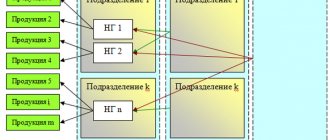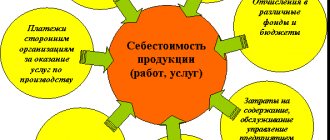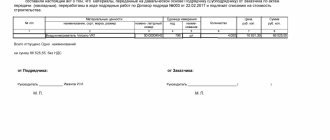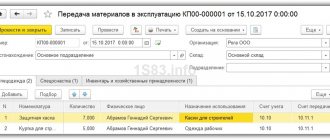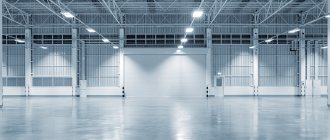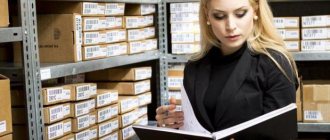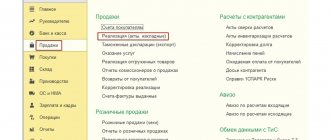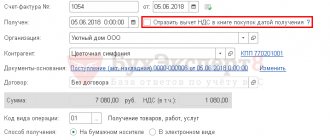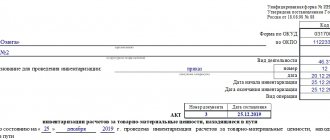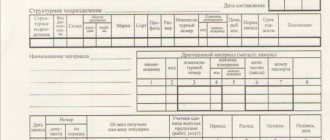If you are serious about getting into trading, you will have to choose which costing method to use. Such a seemingly simple question - how to write off sold goods - can have a serious impact on how your trade will develop. In this material we will look at all methods of cost calculation , evaluate the advantages of each, and also tell you when it is better to use which one.
Please note: it is more convenient to keep records and view analytics in the same program. The MoySklad goods accounting service has built-in reports on turnover, balances, profitability, and movement of goods. They are generated automatically and can be viewed at any time, for example, in a mobile application. No matter where you are: business is always under control. Register and try it now: it's free!
Try MySklad
The law allows three methods of assessment and calculation - by the cost of each unit of goods, by the average cost and by the FIFO method (English: “first in, first out”). Each of them will give different indicators for business profitability, and therefore for tax and management accounting. Let's figure out what the difference is.
At the cost of each unit
As the name implies, this method assumes that the cost of each specific product is taken into account in the calculations. This system is used when trading unique and expensive goods, when accuracy is important. For example, it is suitable for those who will sell cars, art or jewelry. It is logical that when a product is piecemeal, and one cannot easily replace another, exactly the price at which it was delivered is entered into accounting when writing off inventory items. This method also assumes that it is always clear from which specific delivery the goods sold came from.
Average cost method
It is used more often than the previous one, and involves monthly calculation of the cost of goods using the arithmetic average. In this case, it does not matter from which specific delivery this or that product “left”. This method of writing off inventory items is suitable for companies selling products for which piece accounting is not important. This could be, for example, stationery, clothing, shoes, toys, cosmetics and any other consumer goods. The average cost method is especially beneficial for those goods for which the price is constantly changing, both up and down.
This method is the easiest to account for. The average cost of goods is calculated using the following formula:
[average cost of inventory items] = ([cost of inventory items at the beginning of the month] + [cost of inventory items received during the month]) / ([number of inventory items at the beginning of the month] + [number of inventory items received during the month])
And the cost of inventory written off per month is calculated as follows:
[cost of written-off inventory items] = [average cost of inventory items] X [number of inventory items sold per month]
Example of calculation using the average cost method
At the beginning of the month, the Stationery store had 370 ballpoint pens left at a purchase price of 10 rubles. Within a month, another 1000 pens were delivered in two batches - 500 for 9 rubles 50 kopecks and 500 for 9 rubles. We calculate the average cost.
Cost of inventory items at the beginning of the month: 370 X 10 = 3700 (rub.) Cost of the 1st new supply of inventory items: 500 X 9.5 = 4750 (rub.) Cost of the 2nd new supply of inventory items: 500 X 9 = 4500 (rub.) Average cost of goods and materials: (3700 + 4750 + 4500) : (370 + 1000) = 9.45 (rub.)
This average cost will be used to calculate the written-off goods and calculate the profit. For example, if pens are sold for 15 rubles, and 1,100 pens were sold in a month, the profit specifically for these pens will be calculated as follows:
1100 X 15 – 1100 X 9.45 = 6105 (rub.)
The advantages of the average cost calculation method are the stability of the price of materials sold and simplicity. However, from a tax accounting point of view, it is not optimal in the case where, for example, you purchase the same pens from the same supplier, and he gradually reduces your prices. Let's consider the following option.
GLAVBUKH-INFO
The actual cost of materials purchased for a fee is the amount of the organization's actual costs for the acquisition, with the exception of value added tax and other refundable taxes (except for cases provided for by the legislation of the Russian Federation).The list of actual costs taken into account when determining the actual cost of materials purchased for a fee is set out in paragraph 3 of this chapter.
First, let’s consider how to reflect in the accounting of transactions for the receipt of materials purchased for a fee from a supplier, without using account 15 “Procurement and acquisition of material assets.”
In this case, materials are accepted for accounting at actual cost, which is reflected by an entry in the debit of account 10 “Materials” and the credit of account 60 “Settlements with suppliers and contractors.”
Tax aspects. For tax accounting purposes in accordance with clause 2 of Art. 254 of the Tax Code of the Russian Federation, the cost of inventories acquired for a fee is determined based on the prices of their acquisition (excluding value added tax and excise taxes, except for cases provided for by the Tax Code of the Russian Federation).
The cost of goods may include commissions paid to intermediary organizations, import customs duties and fees, transportation costs and other costs associated with their acquisition.
VAT paid when purchasing materials is not included in their actual cost and in their accounting prices, unless otherwise provided by the legislation of the Russian Federation.
VAT refers to refundable taxes and the procedure for its accounting and deduction when purchasing materials is determined by the norms of Chapter. 21 Tax Code of the Russian Federation.
VAT paid on the purchase of materials is recorded on account 19 “Value added tax on acquired assets” (subaccount 19–3 “Value added tax on acquired inventories”) simultaneously with the acceptance of received materials for accounting.
In accordance with paragraph 4 of Art. 168 of the Tax Code of the Russian Federation in payment documents, including in registers of checks and registers for receiving funds from a letter of credit, in primary accounting documents and invoices, the corresponding amount of VAT must be highlighted on a separate line.
Subject to the conditions established by Ch. 21 of the Tax Code of the Russian Federation, the organization that purchases the materials may subsequently present the above amounts of VAT for deduction.
Amounts of VAT subject to tax deduction are written off from the credit of account 19 “Value added tax on acquired assets” (subaccount 19–3 “Value added tax on acquired inventories”), as a rule, to the debit of account 68 “Calculations for taxes and fees" (subaccount 68-1 "Calculations for value added tax").
Since January 1, 2006, it has been established that deductions of VAT amounts presented to the organization upon acquisition or paid when importing materials into the customs territory of the Russian Federation are made after the specified materials are registered.
In addition, VAT amounts can be deducted if there are correctly executed primary documents (including invoices) and provided that the purchased materials are intended for production activities or other operations recognized as objects of taxation.
It has been established that if the above conditions are not met, the amounts of VAT charged to the organization when purchasing such materials are not subject to deduction and are reflected in the accounting records in a different way.
In particular, when in the primary accounting documents (invoices, invoices, invoices, cash receipt orders, certificates of completion of work, etc.), confirming the cost of purchased materials, the amount of VAT is not allocated, then in the settlement documents (orders, demands-orders) , registers of checks and registers for receiving funds from a letter of credit) its calculation is not carried out by calculation.
The cost of materials purchased in such cases, including the estimated VAT on them, is taken into account as a whole in the materials accounts and is subsequently written off in the prescribed manner as production costs.
In addition, according to paragraph 2 of Art. 170 of the Tax Code of the Russian Federation, VAT amounts presented to the buyer when purchasing materials on the territory of the Russian Federation or actually paid when importing materials into the territory of the Russian Federation are taken into account in their cost in the following cases:
- acquisition (import) of materials used for operations for the production and/or sale (as well as transfer, execution, provision for one’s own needs) of goods (work, services) that are not subject to taxation (exempt from taxation);
- acquisition (import) of materials used for operations for the production and/or sale of goods (work, services), the place of sale of which is not recognized as the territory of the Russian Federation;
- acquisition (import) of materials by persons who are not VAT payers or are exempt from fulfilling taxpayer obligations for the calculation and payment of VAT;
- acquisition (import) of materials for the production and/or sale (transfer) of goods (work, services), operations for the sale (transfer) of which are not recognized as the sale of goods (work, services) in accordance with clause 2 of Art. 146 of the Tax Code of the Russian Federation.
Let's consider operations to purchase materials for a fee and register them in compliance with all norms of PBU 5/01 and the requirements of tax legislation.
Example 1. Let’s assume that an organization purchased materials for a fee from a supplier organization in the amount of 35,400 rubles, including VAT - 5,400 rubles. The costs of delivering materials to the organization’s warehouse amounted to 2,360 rubles, including VAT - 360 rubles.
The materials are intended for use in the production of products subject to VAT. All primary accounting and settlement documents are drawn up correctly, and the VAT amount is highlighted in a separate line.
No.
| Contents of business transactions | Corresponding accounts | Amount, rub. | ||
| Debit | Credit | |||
| 1 | The cost of purchased materials is reflected according to the supplier’s settlement documents (excluding VAT) | 10-1 | 60 | 30 000 |
| 2 | The amount of VAT presented by the supplier of materials is reflected | 19-3 | 60 | 5 400 |
| 3 | The cost of services of a transport organization for the delivery of materials is reflected (excluding VAT) | 10-1 | 60 | 2 000 |
| 4 | The amount of VAT presented by the transport organization is reflected | 19-3 | 60 | 360 |
| 5 | Payment has been made to the supplier for materials (including VAT) | 60 | 51 | 35 400 |
| 6 | Payment has been made for the services of a transport organization for the delivery of materials (including VAT) | 60 | 51 | 2 360 |
| 7 | VAT amounts paid on transport services accepted for registration by materials are presented for deduction. | 68-1 | 19-3 | 5 760 |
| 8 | The write-off of materials when they are released to the main production is reflected | 20 | 10 | 32 000 |
Now let’s look at transactions that reflect the receipt of materials purchased for a fee, using account 15 “Procurement and acquisition of material assets.”
In this case, the receipt of materials is reflected by an entry in the debit of account 15 “Procurement and acquisition of material assets” and the credit of account 60 “Settlements with suppliers and contractors”.
Subject to the conditions of example 1, transactions for the purchase of materials using account 15 and their acceptance for accounting are recorded using the following transactions:
| No. | Contents of business transactions | Corresponding accounts | Amount, rub. | |
| Debit | Credit | |||
| 1 | The purchase price of purchased materials is reflected according to the supplier’s settlement documents (excluding VAT) | 15 | 60 | 30 000 |
| 2 | The amount of VAT presented by the supplier of materials is reflected | 19-3 | 60 | 5 400 |
| 3 | The cost of services of a transport organization for the delivery of materials is reflected (excluding VAT) | 15 | 60 | 2 000 |
| 4 | The amount of VAT presented by the transport organization is reflected | 19-3 | 60 | 360 |
| 5 | Payment has been made to the supplier for materials (including VAT) | 60 | 51 | 35 400 |
| 6 | Payment for services for the delivery of materials has been made (including VAT) | 60 | 51 | 2 360 |
| 7 | Materials are capitalized at accounting prices | 10-1 | 15 | 32 000 |
| 8 | VAT amounts paid on transport costs accepted for registration by materials are presented for deduction. | 68-1 | 19-3 | 5 760 |
| 9 | The write-off of materials when they are released to the main production is reflected | 20 | 10 | 32 000 |
The amount of the difference in the cost of acquired inventories, calculated in the actual cost of acquisition (procurement) and accounting prices, is debited or credited to account 16 “Deviation in the cost of material assets” from account 15 “Procurement and acquisition of material assets.”
The differences in the cost of acquired inventories, calculated in the actual cost of acquisition (procurement), and accounting prices accumulated on account 16 “Deviation in the cost of material assets” are written off (reversed - if the difference is negative) to the debit of the production cost accounts (expenses for sale).
| No. | Contents of business transactions | Corresponding accounts | |
| Debit | Credit | ||
| 1 | The amount of deviations of the actual cost of purchasing materials from the accounting price is reflected (the cost of materials at accounting prices is lower than their actual cost) | 16 | 15 |
| 2 | The amount of identified deviations is written off to production | 20 | 16 |
| or | |||
| 1 | The amount of deviations of the actual cost of purchasing materials from the book price is reflected (the cost of materials at book prices is higher than their actual cost) | 15 | 16 |
| 2 | The amounts of materials written off for production were reversed by the amount of identified deviations | 20 | 16 |
VAT accounting and deduction will be reflected differently in situations where at least one of the following cases occurs:
1) the materials are intended for use in the production of products exempt from VAT;
2) materials are purchased by an organization that is not a VAT payer in accordance with tax legislation;
3) materials are intended for transfer to the authorized capital of another organization, etc. (i.e., intended for operations that are not recognized as the sale of materials in accordance with paragraph 2 of Article 146 of the Tax Code of the Russian Federation).
In these cases, the amounts of VAT paid when purchasing materials are taken into account in their cost and are reflected in the following entries:
| No. | Contents of business transactions | Corresponding accounts | |
| Debit | Credit | ||
| 1 | The purchase price of purchased materials is reflected according to the supplier’s settlement documents (excluding VAT) | 10-1 | 60 |
| 2 | The amount of VAT presented by the supplier of materials is reflected | 19-3 | 60 |
| 3 | Payment for materials has been made (including VAT) | 60 | 51 |
| 4 | The amount of VAT is included in the cost of purchased materials | 10-1 | 19-3 |
A situation is possible when an organization acquires materials for the purpose of using them to produce products subject to value added tax, and then uses these materials to produce products exempt from value added tax.
In this situation, the organization, after accepting the materials for accounting, could deduct VAT.
If in the future the organization uses these materials to produce products that are exempt from VAT, then, in accordance with tax legislation, the organization will need to restore the amounts of VAT previously accepted for deduction in the prescribed manner.
From January 1, 2006, in accordance with paragraph 3 of Art. 170 of the Tax Code of the Russian Federation in relation to materials, VAT amounts are subject to restoration in the amount previously accepted for deduction. Restoration of tax amounts is carried out in the tax period in which the materials were used to produce products exempt from VAT.
Tax amounts subject to recovery in such cases should not be included in the cost of materials, but should be taken into account as part of other expenses in accordance with Art. 264 Tax Code of the Russian Federation.
The restored VAT amounts should increase the amount of VAT payable to the budget by the organization.
| < Previous | Next > |
FIFO method. Calculation example
This is the most popular cost calculation method. It uses the queuing principle. It is assumed that the items that were delivered first are written off first. Hence the name FIFO method (English: “first in, first out” - “first in, first out”). However, unless the shelf life is important, it is not necessary to ship goods from an earlier delivery first - this is used as an assumption in the calculations. That is, the cost of goods that are sold first is calculated at the price of the balances from the “oldest” delivery. When the balances are quantitatively exhausted, inventory items are written off at the price of the next delivery, then the next one, and so on.
Example of calculation using the FIFO method
Let’s take our “Stationery” store with ballpoint pens and exactly the same situation as above. We have 370 ballpoint pens for 10 rubles and are supplied in two batches of 500 pens - first for 9 rubles 50 kopecks, then for 9 rubles. 1100 pens sold for 15 rubles. We count the profit.
The first to go will be 370 pens at 10 rubles each - that’s 3,700 rubles. Next, 500 pens cost 9.5 rubles each, which is another 4,750. There are 230 pens left, each priced at 9 rubles, which is 2,070 rubles.
1100 X 15 – (3700 + 4750 + 2070) = 5980 (rub.)
As can be seen from the example of calculation using the FIFO method, the profit indicator in this case is lower than in the example with average cost. Accordingly, income tax will be less.
The difference between the accounting price of inventories and their actual cost
The difference (deviation) between the accounting price of inventories and their actual cost is written off to account 16 “Deviation in the cost of material assets.”
If the accounting price exceeds the actual cost, an entry is made in the debit of account 15 and the credit of account 16.
Debit 15 Credit 16 – the excess of the book price of materials over their actual cost is written off (savings).
If the accounting price of inventories is less than their actual cost, the following entry is made:
Debit 16 Credit 15 – the excess of the actual cost of inventories over their book price (overexpenditure) is written off.
FIFO or average cost - which is better?
Both of these methods work quite well. However, FIFO is considered more accurate than the average cost method. It is especially beneficial in terms of taxes if the price of the goods you purchase is constantly decreasing. Then the cost of the written-off goods will be the greatest, and the balance will be the minimum. Therefore, the answer to the question of which is better, FIFO or average cost, in most cases will be the first option.
Instructions 15 count
Instructions for using the chart of accounts for accounting the financial and economic activities of organizations in accordance with Order No. 94n dated October 31, 2000:
Account 15 “Procurement and acquisition of material assets” is intended to summarize information on the procurement and acquisition of inventories related to funds in circulation.
The debit of account 15 “Procurement and acquisition of material assets” includes the purchase value of inventories for which the organization received payment documents from suppliers. In this case, entries are made in correspondence with accounts 60 “Settlements with suppliers and contractors”, 20 “Main production”, 23 “Auxiliary production”, 71 “Settlements with accountable persons”, 76 “Settlements with various debtors and creditors”, etc. . depending on where certain values came from, and on the nature of the costs of procuring and delivering inventories to the organization.
The credit of account 15 “Procurement and acquisition of material assets” in correspondence with account 10 “Materials” includes the cost of inventories actually received by the organization and recorded.
The amount of the difference in the cost of acquired inventories, calculated in the actual cost of acquisition (procurement), and accounting prices is written off from account 15 “Procurement and acquisition of material assets” to account 16 “Deviation in the cost of material assets.”
The balance of account 15 “Procurement and acquisition of material assets” at the end of the month shows the availability of inventories on the way.
FIFO method in warehouse program
Despite the fact that the FIFO method is quite simple in terms of understanding the principle of its operation, manually calculating the cost each time is very labor-intensive. Especially if you have a small business, and you yourself are the director, the cashier, the accountant, and the chief buyer. It is much easier if you simply enter data on deliveries and sales and immediately get the result. This is exactly how you can work with the MyWarehouse service. The program fully automates trading processes and itself calculates the cost of written-off goods using the FIFO method. MyWarehouse calculates profitability for each product or product group, stores and displays current and historical balances, as well as many other data that may be useful. This way, you save time and can be confident in the accuracy of the indicators on which you make decisions.
Company accounting policy
According to the law, the organization itself chooses how to calculate the cost of goods. It is important that the method you consider is necessarily reflected in the company's accounting policies. This is stated in Article 313 of the Tax Code of the Russian Federation, as well as in paragraph 73 of the Methodological Instructions approved by Order of the Ministry of Finance of Russia dated October 28, 2001 No. 119n.
Changes to accounting policies can be made once a year. That is, you can deposit them earlier, but they will take effect according to the law next year - at the beginning of the new tax period. The accounting policy is drawn up by an accountant and approved by the head of the organization.
For management accounting purposes, you are free to use any costing method. Our advice is to use the same one that is written down in your accounting policy - this way there will be less confusion.
Account 15 Procurement and acquisition of material assets
The capitalization of material assets at accounting prices is reflected in the credit of account 15.
Debit 07 (10, 11, 41) Credit 15 – inventories were capitalized at the book price.
This accounting price will be used in the future when writing off material assets (to costs, to a sales account, etc.).
The actual cost of acquired inventories is reflected in the debit of account 15.
Debit 15 Credit 60 – reflects the actual cost of material assets based on the supplier’s settlement documents.
Other expenses associated with the purchase of inventories - transport, consulting, information - are also reflected in the debit of account 15. Each type of such expenses must be attributed to a specific batch of inventories. It is advisable to organize analytical accounting for account 15 by individual names of inventories and their locations.
Typical transactions for account 15
By debit of the account
| Contents of a business transaction | Debit | Credit |
| The amount of deviations of the actual cost of capitalized inventories from accounting prices is taken into account (savings) | 15 | 16 |
| Inventory produced in the main production was capitalized (using account 15) | 15 | 20 |
| Inventories produced in auxiliary production were capitalized (using account 15) | 15 | 23 |
| The cost of inventories takes into account the costs associated with their procurement and delivery (in a trade organization using account 15) | 15 | 44 |
| The purchase cost of inventories for which supplier settlement documents were received was taken into account (using account 15) | 15 | 60 |
| The costs of procuring inventories are taken into account (using account 15) | 15 | 60 |
| Amounts of non-refundable taxes and fees accrued in connection with the purchase of inventories are included in their original cost (using account 15) | 15 | 68 |
| Inventories acquired by accountable persons were capitalized (using account 15) | 15 | 71 |
| Inventories contributed as a contribution to the authorized capital were capitalized (using account 15) | 15 | 75-1 |
| The amount of the claim previously presented to suppliers of inventories, the collection of which was refused, is written off to increase the value of the property (using account 15) | 15 | 76-2 |
| The branch, allocated to a separate balance sheet, received inventories from the head office of the organization (in the accounting of the branch) (using account 15) | 15 | 79-1 |
| The head office of the organization received inventories from the branch, allocated to a separate balance sheet (in the accounting of the head office of the organization) (using account 15) | 15 | 79-1 |
| Inventories received as a contribution under a joint venture agreement were capitalized (on a separate balance sheet) (using account 15) | 15 | 80 |
| Inventories received for the implementation of special-purpose activities were capitalized (using account 15) | 15 | 86 |
| The inventories identified during the inventory were capitalized (using account 15) | 15 | 91-1 |
By account credit
| Contents of a business transaction | Debit | Credit |
| Equipment requiring installation has been capitalized at discounted prices | 07 | 15 |
| Materials were capitalized at accounting prices | 10 | 15 |
| Animals registered at accounting prices | 11 | 15 |
| The amount of deviations of the actual cost of incoming inventories from accounting prices is taken into account (overexpenditure) | 16 | 15 |
| Goods were capitalized at discount prices | 41 | 15 |
| Costs for the acquisition of insured material assets were written off from insurance compensation. | 76-1 | 15 |
| Costs for the acquisition of material assets were transferred to a branch allocated to a separate balance sheet (posting in the accounting of the head office) | 79-1 | 15 |
| Costs for the acquisition of material assets were transferred to a branch allocated to a separate balance sheet (posting in the accounting of the head office) | 79-1 | 15 |
| The costs of acquiring material assets upon termination of the agreement on joint activity were transferred to the participant in a simple partnership (on a separate balance sheet of the joint activity) | 80 | 15 |
| Costs for the acquisition of material assets disposed of as a result of sale or write-off (using account 15) are included in other expenses | 91-2 | 15 |
